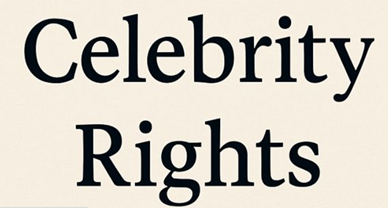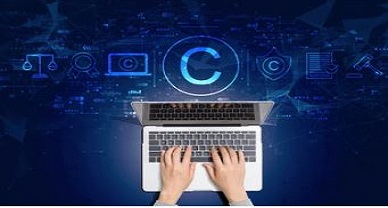Artificial Intelligence Art and Indian Copyright Registration
Introduction
AI-generated art is booming, and the Indian Copyright Office is baffled. AI generated art is made autonomously by artificial intelligence without human creative input (see below for the artwork Dall-E 2 created in response to my suggestion “a machine painting a canvas”). Under the Indian Copyright Act, such works are classified as “computer generated works”. In 1995, computer-generated works were added as a category of works, probably at a time when AI was not producing art. Copyright law grants authorship to the “person who causes the work to be created” for such works. It is debatable if AI can be named as an author of a piece. There is no Indian precedent to suggest that computer/software can be given authorship. The Indian Copyright Office similarly provides no policy guidance on whether only humans can be deemed writers.
Indian Copyright Registration
The Indian Copyright Office is similarly confused how to handle such requests. As previously reported, the copyright office rejected an application in 2020 that claimed AI (RAGHAV) who was only/sole author of the artwork.[i] Another application, however, was made in which a natural person and an AI again (RAGHAV) were designated as co-authors for another artwork. In this case, the copyright office allowed registration. The basis for registration is not specified. The Copyright Office appears to have given this registration by error, without applying its mind, as it filed a withdrawal notice around one year later.[ii] The Copyright Office places the onus on the applicant to “inform the Copyright Office on the legal status of the AI tool Raghav Artificial Intelligence Painting App’ in the withdrawal notice.”
[Image Sources : Shutterstock]
The (human, co-author) applicant is now claiming that once granted, a copyright registration cannot be ‘withdrawn’. The procedure is a correction proceeding in court to cancel the registration. This notification, as previously stated, was issued around November 2021. The current status of this case is unknown. However, according to the Copyright Office’s website, the status of this application is still ‘registered’.[iii]
This is, admittedly, old news. However, given that AI-generated artwork has not died but rather gained traction, this issue is still worth discussing.[iv]
Until it is removed from the registry, this application may serve as precedent for subsequent applications (or rectified, if such corrections are permitted). While the Copyright Office may currently conclude that copyright protection is dependent on human authorship, it is powerless to intervene. further, if the applications are denied, applicants may claim for unfair rejection. In any instance, it seems that the Copyright Office will have to spend time, money, and resources in court to resolve this matter. This may have been avoided had the office not reversed its judgement in the first place.
It is startling to see copyright registrations being issued haphazardly. This is especially troubling given that High Courts are already raising copyright registrations from mere registrations (the results of non-mandatory administrative processes) to bullet-proof licences. According to Lokesh, the Gujarat High Court recently ruled that registration certificates from the Copyright Office grant immunity from copyright infringement. This perception, he explains, is erroneous.
On the one hand, there is no legal precedent determining whether or not AI can be classified as an author. In order to “extract benefits from AI”, a Parliamentary Standing Committee has advised “revisiting IPR legislation and implementing a strong IPR framework”.[v] However, the law remains intact and ambiguous. On the other hand, it may be conceivable to obtain copyright registration naming AI as a co-author and use the registration as a defence against allegations of copyright infringement. A troubling dilemma.
Conclusion
New technology is perplexing, and governments all across the world are dealing with the same problem. The US Copyright Office, for example, has unequivocally rejected such applications on the basis that a “work meets the legal and formal requirements of copyright protection only if it is created by a human author”. The UK Intellectual Property Office, on the other hand, recognises the fluid character of computer-generated works and is taking a wait-and-see attitude.
Indian authorities should presumably consider their strategy to dealing with such difficulties rather than acting hastily and setting precedents that could be hazardous in the future.
Author: Janhavi Meshram, A Student of National Law University, Nagpur, in case of any queries please contact/write back to us at support@ipandlegalfilings.com or IP & Legal Filing.
References
[i] Managing IP: India recognises AI as co-author copyright artwork by Sukanya Sarkar
https://www.managingip.com/article/2a5czmpwixyj23wyqct1c/exclusive-india-recognises-ai-as-co-author-of-copyrighted-artwork Last Referred: 02/11/2022
[ii] Managing IP: India recognises AI as co-author copyright artwork by Sukanya Sarkar
https://www.managingip.com/article/2a5czmpwixyj23wyqct1c/exclusive-india-recognises-ai-as-co-author-of-copyrighted-artwork Last Referred: 02/11/2022
[iii] Ibid.
[iv] Artificial intelligence is not a replacement for creative humans-it’s a new tool for artists. By, Joseph Early
https://scroll.in/article/1034127/artificial-intelligence-is-a-new-tool-for-artists-not-a-digital-replacement-for-creative-humans Last Referred: 02/11/2022
[v] Intellectual Property Rights over computer generated works, ABZ Partners
https://www.lexology.com/library/detail.aspx?g=f207df52-ac19-4611-846d-70b5a2ca50b8 Last Referred: 02/11/2022



